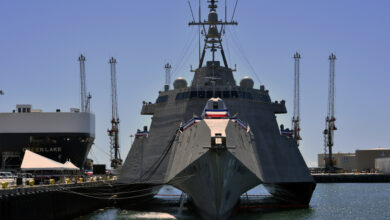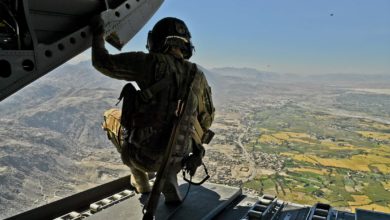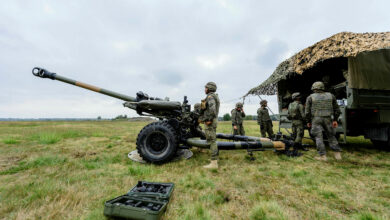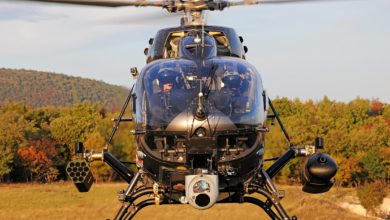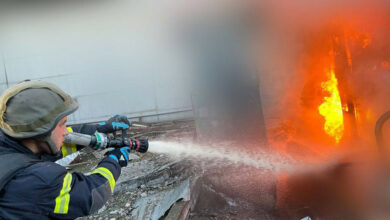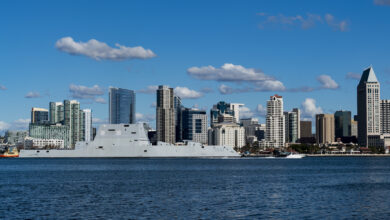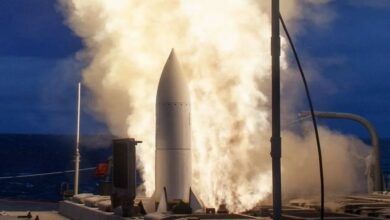Lockheed Martin was awarded a $480 million contract to develop a new hypersonic missile for the U.S. Air Force, the Department of Defense said in a release.
The not-to-exceed $480,000,000 undefinitized sole-source contract for the Air-launched Rapid Response Weapon critical design review and test and production readiness support is expected to be completed by November 30, 2021, the Monday, August 13 release said.
Things that travel faster than Mach 5 – five times the speed of sound or 6,125 km/h or 3,806 mph – are considered hypersonic.
The related solicitation on the FedBizOpps website said that the system, also known as ARRW, will “further developments from the Tactical Boost Glide hypersonic technology demonstration to achieve an operational prototype weapon.”
The contract is for rapid prototyping and will include “all necessary effort through successful flight testing,” the solicitation said, adding that “Lockheed Martin is the only firm that appears to possess the necessary capability within the Air Force’s time frame without causing an unacceptable delay or substantial duplication of costs.”
In April, Lockheed was awarded a $928 million contract for the development and integration of the Hypersonic Conventional Strike Weapon (HCSW) for the U.S. Air Force.
“We are going to go fast and leverage the best technology available to get hypersonic capability to the warfighter as soon as possible,” Air Force Secretary Heather Wilson said.
Air Launched Rapid Response Weapon will “push the art-of-the-possible”
Giving evidence to the House Armed Services Committee in March, Deputy Assistant Secretary of the Air Force for Science, Technology, and Engineering Jeffrey H. Stanley said that the ARRW will “push the art-of-the-possible by leveraging the technical base established by the Air Force and DARPA partnership in hypersonics science and technology.”
Stanley said the U.S. Air Force also continues to conduct research and development in partnership with DARPA and NASA on two other programs – the Hypersonic Air-breathing Weapon Concept (HAWC) project that “aims to develop and demonstrate critical technologies and attributes of an effective and affordable hypersonic cruise missile,” and the Tactical Boost Glide (TBG) project that aims to “enable future air-launched, tactical-range hypersonic boost glide systems.”
A justification for the award of the single-source ARRW contract to Lockheed said “ARRW leverages heavily off of the Tactical Boost Glide (TBG) effort initially” and due to the urgent need, “the only viable approach able to meet the operational availability requirement for ARRW is a continuation of development of the Tactical Boost Glide (TBG) hypersonic technology demonstration.”
“The TBG effort is intended to develop the hypersonic glider and specific key technologies that will directly support the ARRW system,” it said.
“Lockheed Martin has already partially completed the development program for the flight certified air-launched booster and ordnance subsystems that will be needed for the ARRW system,” it continued.
The justification said that “any contractor other than Lockheed Martin would at the very least require replication of the same developmental effort that Lockheed Martin has already completed” and “use of another contractor would result in an unacceptable delay of at least 2 years.”
It said Lockheed Martin has already invested in “key infrastructure requirements necessary to develop and produce early operational capability quantities of the ARRW system,” including investments by DARPA totalling $196 million.
US Air Force sees ‘urgent need’ to develop hypersonics
Stanley noted that although America has “a long history in hypersonic research, the United States no longer enjoys preeminence and the Air Force recognizes the urgent need to increase investment in this technology.”
Pentagon Undersecretary for Research and Engineering Mike Griffin said in March that hypersonics would be his top technical priority, adding that China has performed roughly “20 times as many hypersonic weapons tests as has the United States over the last decade.”
In May, China displayed its Lingyun-1 air-breathing hypersonic missile in public for the first time in Beijing. Lingyun uses a scramjet engine China was known to have developed and tested in 2015.
Also in May, Russia’s Deputy Defense Minister Yuri Borisov said 10 Russian MiG-31 fighter jets adapted to carry the new Kinzhal hypersonic missile “have gone on test combat duty,” after Russian President Vladimir Putin said on March 1 that the Kinzhal had entered trial service with the Russian Air Force. The 2,000-km range air-launched hypersonic missile is capable of delivering a nuclear or conventional warhead.
A second Russian system, the Avangard hypersonic glide vehicle, could enter service in 2020.
The CEO of the company developing India’s BrahMos ramjet-powered cruise missile said that the engine will be “tinkered” to reach Mach 5 in three years.
Toward ‘Non-Nuclear Deterrence’? Russia’s investment in conventional strategic strike


